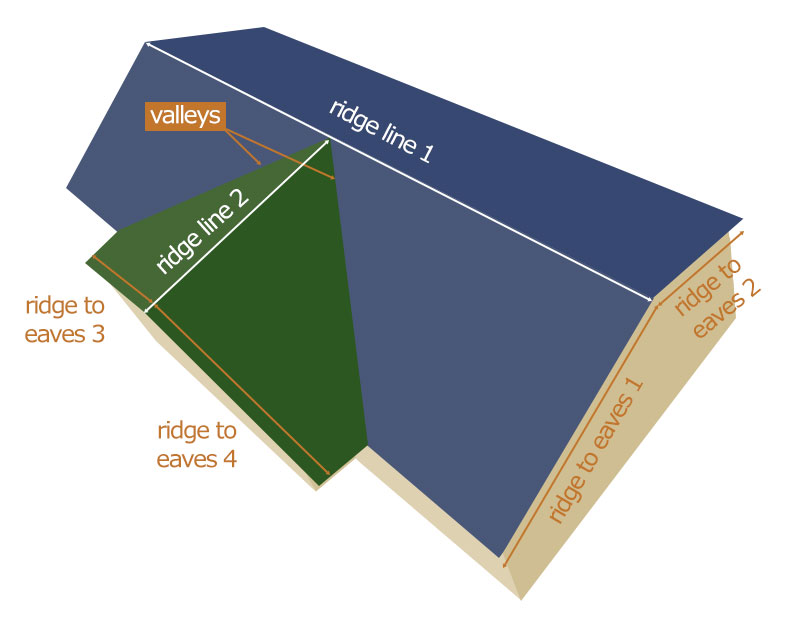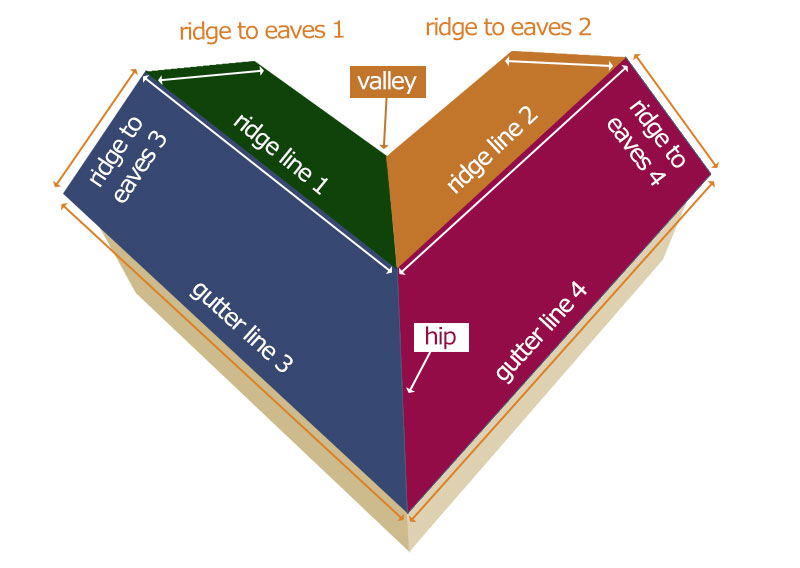Adjoining Apex Roofs Measuring Guide
Adjoining apex roofs incorporate more than one apex roof connected to each other. Measurements on these roofs need to be taken a little differently from an ordinary apex roof. Sheets will need to be cut on site where the roofs join and valley or hip flashing should be fitted at the joins. The following examples give guidance on the measurements that should be taken to correctly specify your roofing sheets.
Example 1 T-shaped
The below example is a common form of an adjoining apex roof commonly known as T-shaped. The joins form two valleys which will require flashing.

Measurements are essentially taken as two roofs (indicated above in blue and green)
To calculate the sheets required for the main apex (blue) ridge line 1 must be taken to calculate the number of sheets required whilst ridge to eaves 1 and 2 are used for the sheet lengths each side of the apex.
The process is then repeated for apex 2 (green) using ridge line 2 and ridge to eaves 3 and 4.
Sheets are cut down on site to create the valleys. Two piece valley gutter flashings are recommended to divert water away and provide a neat finish where sheets meet at the valley. Ridge flashings are used at the ridge lines (tip of the apex). Bargeboards can be used along the gable ends.
Example 2 L-shaped

The above example is slightly more complex than the T-shaped roof and should essentially be treated as four separate areas.
To calculate sheets requirements measurements must be taken along ridge line 1 and ridge to eaves 1. This process should then be repeated for ridge line 2 and ridge to eaves 2. This will give you sheet size specification for the inside section of the L-shaped roof (green and orange areas)
You can then move onto the outside section (blue and purple) Measurements should be taken from gutter line 3 and ridge to eaves 3 followed by gutter line 4 and ridge to eaves 4.
The above example forms a valley on the inside and a hip on the outside. Two piece valley flashings and hip flashings should be used where sheets meet at the valley and hip. Ridge flashings are used at the ridge line (tip of the apex). Bargeboards can be used along the gable ends.








